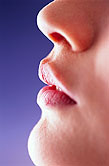- Skip Storing This Everyday Product in the Fridge Door
- Green Tea + B3 Pairing May Boost Brain Health
- Navigating Your Midlife Crisis: Embracing New Possibilities
- City Raccoons Showing Signs of Domestication
- Mapping the Exposome: Science Broadens Focus to Environmental Disease Triggers
- One Week Less on Social Media Linked to Better Mental Health
- Your Brain Changes in Stages as You Age, Study Finds
- Some Suicide Victims Show No Typical Warning Signs, Study Finds
- ByHeart Formula Faces Lawsuits After Babies Sickened With Botulism
- Switch to Vegan Diet Could Cut Your Greenhouse Gas Emissions in Half
Let Your Nose Guide You to Less Fatty Foods

How fatty is that food in front of you? Your nose knows, a new study suggests.
The study, which found that people’s sense of smell is adept at gauging foods’ fat content, might have real-world uses. For example, it might be possible to manipulate food products’ odor to make low-fat items more appealing, thereby cutting the amount of fat in people’s diets, said researchers at the Monell Chemical Senses Center in Philadelphia.
“The human sense of smell is far better at guiding us through our everyday lives than we give it credit for,” study senior author and neuroscientist Johan Lundstrom said in a center news release. “That we have the ability to detect and discriminate minute differences in the fat content of our food suggests that this ability must have had considerable evolutionary importance.”
Fat is “calorie dense” and has been an important source of energy for humans through much of evolution, the researchers said. This means it would have been to our advantage to be able to detect the nutrient in food.
To test people’s ability to smell fat in food, the researchers had volunteers smell milk with three amounts of fat found in a typical milk product: 0.125 percent, 1.4 percent or 2.7 percent fat.
The test was conducted three times using different sets of participants: in Philadelphia with normal-weight people, in the Netherlands with normal-weight people; and again in Philadelphia with both normal-weight and overweight people.
In all three experiments, people were able to use their sense of smell to detect the different levels of fat in the milk, regardless of their culture or weight, according to the study, which was published Jan. 22 in the journal PLoS One.
Study lead author Sanne Boesveldt, a sensory neuroscientist, said the next step is identifying the odor molecules in the food that allow people to detect fat levels.
“Fat molecules typically are not airborne, meaning they are unlikely to be sensed by sniffing food samples,” Boesveldt said in the news release. “We will need sophisticated chemical analyses to sniff out the signal.”
More information
The U.S. Centers for Disease Control and Prevention has more about dietary fat.
Source: HealthDay
Copyright © 2025 HealthDay. All rights reserved.










